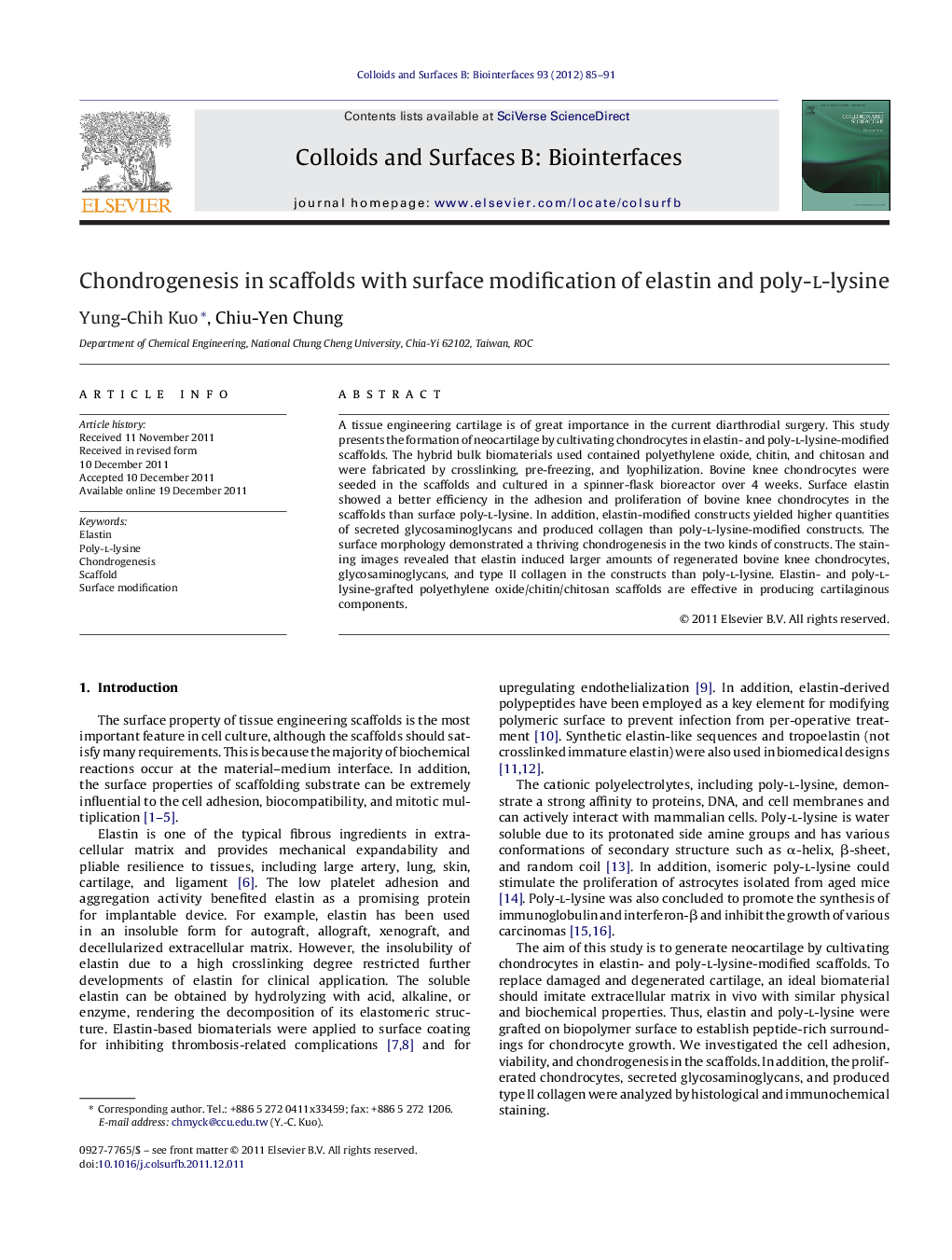| Article ID | Journal | Published Year | Pages | File Type |
|---|---|---|---|---|
| 600890 | Colloids and Surfaces B: Biointerfaces | 2012 | 7 Pages |
A tissue engineering cartilage is of great importance in the current diarthrodial surgery. This study presents the formation of neocartilage by cultivating chondrocytes in elastin- and poly-l-lysine-modified scaffolds. The hybrid bulk biomaterials used contained polyethylene oxide, chitin, and chitosan and were fabricated by crosslinking, pre-freezing, and lyophilization. Bovine knee chondrocytes were seeded in the scaffolds and cultured in a spinner-flask bioreactor over 4 weeks. Surface elastin showed a better efficiency in the adhesion and proliferation of bovine knee chondrocytes in the scaffolds than surface poly-l-lysine. In addition, elastin-modified constructs yielded higher quantities of secreted glycosaminoglycans and produced collagen than poly-l-lysine-modified constructs. The surface morphology demonstrated a thriving chondrogenesis in the two kinds of constructs. The staining images revealed that elastin induced larger amounts of regenerated bovine knee chondrocytes, glycosaminoglycans, and type II collagen in the constructs than poly-l-lysine. Elastin- and poly-l-lysine-grafted polyethylene oxide/chitin/chitosan scaffolds are effective in producing cartilaginous components.
Graphical abstractFigure optionsDownload full-size imageDownload as PowerPoint slideHighlights► Elastin shows a better adhesion and proliferation of chondrocytes than poly-l-lysine. ► Elastin induces higher quantities of glycosaminoglycans and collagen than poly-l-lysine. ► Surface morphology demonstrated a thriving neocartilage generation in the modified constructs. ► Cell and ECM stains verify that elastin is more effective in chondrogenesis than poly-l-lysine.
